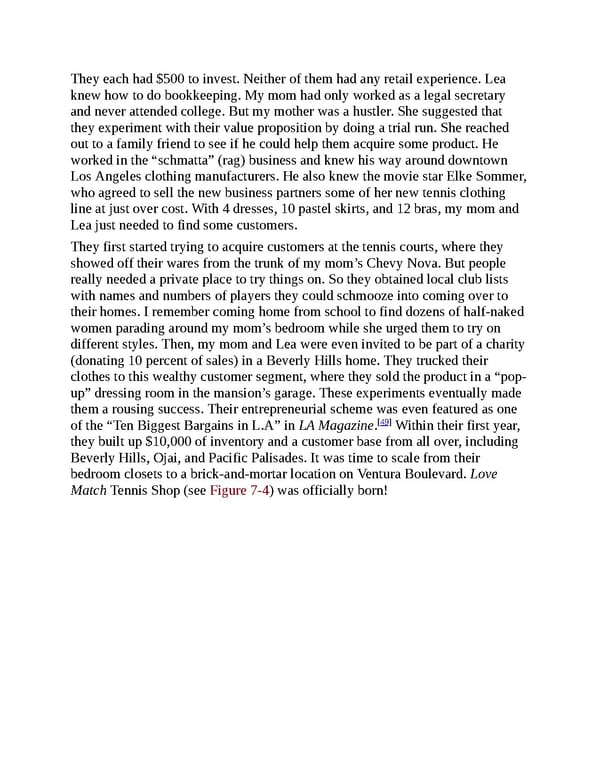They each had $500 to invest. Neither of them had any retail experience. Lea knew how to do bookkeeping. My mom had only worked as a legal secretary and never attended college. But my mother was a hustler. She suggested that they experiment with their value proposition by doing a trial run. She reached out to a family friend to see if he could help them acquire some product. He worked in the “schmatta” (rag) business and knew his way around downtown Los Angeles clothing manufacturers. He also knew the movie star Elke Sommer, who agreed to sell the new business partners some of her new tennis clothing line at just over cost. With 4 dresses, 10 pastel skirts, and 12 bras, my mom and Lea just needed to find some customers. They first started trying to acquire customers at the tennis courts, where they showed off their wares from the trunk of my mom’s Chevy Nova. But people really needed a private place to try things on. So they obtained local club lists with names and numbers of players they could schmooze into coming over to their homes. I remember coming home from school to find dozens of half-naked women parading around my mom’s bedroom while she urged them to try on different styles. Then, my mom and Lea were even invited to be part of a charity (donating 10 percent of sales) in a Beverly Hills home. They trucked their clothes to this wealthy customer segment, where they sold the product in a “pop- up” dressing room in the mansion’s garage. These experiments eventually made them a rousing success. Their entrepreneurial scheme was even featured as one [49] of the “Ten Biggest Bargains in L.A” in LA Magazine. Within their first year, they built up $10,000 of inventory and a customer base from all over, including Beverly Hills, Ojai, and Pacific Palisades. It was time to scale from their bedroom closets to a brick-and-mortar location on Ventura Boulevard. Love Match Tennis Shop (see Figure 7-4) was officially born!
 UX Strategy: How to Devise Innovative Digital Products that People Want Page 174 Page 176
UX Strategy: How to Devise Innovative Digital Products that People Want Page 174 Page 176